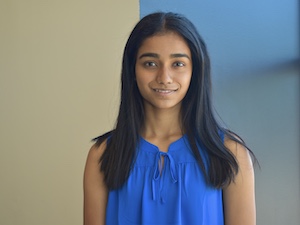2022 Week 2: Environment, Sustainability & Community Health
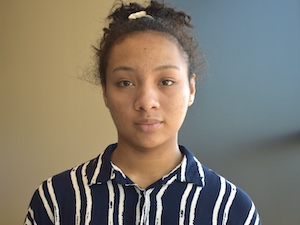 Angelica Brooks | Farm Alliance of Baltimore
Angelica Brooks | Farm Alliance of Baltimore
A huge adjustment that I’ve made with my placement is spending more time outdoors, especially with physically intensive work. Due to the pandemic, my physical activity has drastically decreased, and I am typically not great and physical upkeep in general. However, since joining my placement, I am working hard at urban farms at least once a week. This work includes harvesting, farm maintenance, and lifting of heavy objects. I had to adjust to this fast paced work, especially in the summer heat. I constantly remind myself about pacing during work, taking enough breaks, and increasing my water intake so that I am working in a healthy and productive way.
Although I am still getting accustomed to physical work again, I can say that it is one of my favorite parts of working with the Farm Alliance. Not many have the chance to work on a farm and see food/plant production in action. By contributing to the hard labor that goes into farming, as well as watching the other farmers volunteer their time, I have gained a new appreciation for the work that goes into agriculture. I realized that an extreme amount of energy is required to prepare, plant, and harvest crops, in addition to controlling the general farm environment (taking care of pests and weeds.) Furthermore, running a successful urban farm is truly a collaborative effort; I have learned to appreciate the value of sharing hard work with others in order to reach an outcome that benefits the community (fresh food access).
As I become more experienced at the farm work, I hope to learn more about urban farming techniques and ultimately spread awareness to those that may not know about the effort required to work on an urban farm.
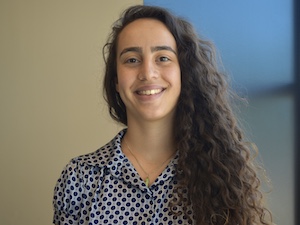 Siena DeFazio | Joy Wellness
Siena DeFazio | Joy Wellness
This week I feel that I finally found a comfortable flow at my placement. It was unfortunate that our gardening club was canceled due to the rain, which is the only class I haven’t been a part of at this point. However, I was able to meet a great group of ladies at our life balance weight management class. I feel I have gotten to the place where I can productively assist instead of just trying to learn. I was able to help the participants with their weight exercise tracking. I also went to the garden and picked some of the mint we have growing everywhere for the participants to take home. I stayed late with one of the ladies while she was waiting for her ride and spent a lot of time talking about mint. I grew up eating mint straight out of the ground. My mom called it nature’s anti depressant. We grew it ourselves and it doesn’t need any help so it’s not like we ever put any pesticides on it that would require washing. And the bugs you’ll inevitably eat are just extra protein. I was telling my new friend about this and she told me that she does the same thing! She said she also loves to make infusions with it. She put it together with ginger and orange peel and let’s it sit – sometimes with watermelon too. I picked a whole bushel of mint for her so she could take it home and make it for her caretaker too.
I realized I really enjoy being helpful in this position. It took me some time to adjust from being somewhere like a produce market where there is always something physical to do to working more directly with people and needing people skills to do anything. However, I feel I have grown to someone who can now listen and evaluate what a person reports to me as their problems so I can effectively do something to help.
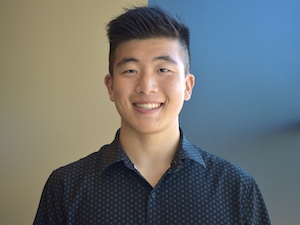 Jeremy Gu | Baltimore SquashWise
Jeremy Gu | Baltimore SquashWise
This week, I’ve been working within my comfort zone the majority of the time by creating educational slides that will supplement their enrichment activity periods. Science based work and slide making has been a long-time interested for me and making these slides have been time-consuming, but straightforward. My other activity this week was creating a rough draft timeline of historic events with the new building acquisition. Squashwise acquired an old greyhound building in the historic district of Baltimore on Howard Street. This upwards of 11 million dollar project needs a welcome display that showcases it’s rich history and I’m the one to provide a rough draft timeline of both Squashwise’s history and the building’s history.
Being a science geek and not a history nut, it’s pretty intimidating to have to read through many articles and piece together a whole story from the readings. I had a pretty good start to the research process since I was provided with a ton of resources to start with, but that ran out before I could get any interesting timeline facts other than the basic ones. The challenge has been finding some really interesting facts about the space while also painting a picture of how the rest of Baltimore was at the time. I haven’t yet moved to news articles of the time period, but I’m hoping to get there next week. I think that will help me out with understanding the context behind the building’s history and how the people at that time viewed the building.
I’ve really enjoyed working with Squashwise and coming to the Tuesday’s BITES sessions to debrief our experiences. It feels like all of our partners are all working on making Baltimore City better through different modalities and it’s great to hear about all of our different, but similar experiences.
 Brahein Richardson | Black Church Food Security Network
Brahein Richardson | Black Church Food Security Network
A challenge that I have had to face this week, which is at the same time something that I am learning to adjust myself to, is placing trust in myself. I am figuring out that as a part of my learning style, I really appreciate and rely on concrete defined instructions and notes. Therefore when I am presented with a task that leaves most of the instructional and creative choices to myself, it makes the task harder for me personally. The past week, I have been designing templates and branding & vision boards to brainstorm ideas for a social media campaign rolling out in the beginning of July. It was challenging in the beginning because I was not exactly sure what my supervisor was looking for or what best would fit the organization since I so far have only had a brief outside view of what this organization means to Baltimore, black churches, black farmers, and black people as a whole. I was confused on how to even start brainstorming and then how to structure my templates and vision boards once I locked down an idea. It was not until I talked to my supervisor about how I was not feeling confident about my designs that she enlightened me on why the task she gave me was so vague. She sees creativity in me and in order to pull on the creativity I already have without hindrance, she allowed me to interpret her instructions however my brain felt necessary. From this, she is teaching me, and I am learning valuable lessons to trust myself, my thoughts, my ideas, and my own creativity. This is what I have had to adjust to, because I am not used to leaning into my creativity and trusting the ideas I bring to the metaphorical table.
Something that I’ve found challenging in the last two weeks is working remotely and working mostly alone. I have two big projects that I’m working on: a curriculum for the Strength Ambassadors summer program starting in July and a “book of games” that, as the name suggests, consists of a list of movement-based games and exercises and accompanying step-by-step instructions. This book of games will go hand-in-hand with the Strength Ambassadors curriculum. Both of these projects are sizeable undertakings because such a curriculum and book of games have never been written before. I am the first to put pen to paper (or rather, fingers to keyboard) in an attempt to detail all the activities and components of the Strength Ambassadors program and create a database of all of the games/exercises employed in MissionFit’s programming. It’s exciting because I have free creative rein to format and design both books as I please. However, I have to admit that my progress has been rather slow. For instance, this past Wednesday I spent the whole day just working on a single introductory page: the logic model for the Strength Ambassadors program. Fidgeting with all the tools, margins, and formatting in Microsoft Word to create this flowchart took much longer than anticipated. Based on how long this one page took, and considering I only have about 8 days to finish a draft of this curriculum, I’ve been a little stressed by anticipating how it’s all going to get done. Working almost fully remotely and without set hours has likely hindered my progress in some ways because sometimes the day will just get away from me, and I’ll find myself realizing at the end of the day that I didn’t make as much progress as I needed to or would’ve liked. In light of this, I’ve been going to Impact Hub more often to hold myself accountable and stay on track. I’ve found this helpful because it simulates a work environment and I’m surrounded by my peers who are also working. I definitely plan on going to Impact Hub often this upcoming week and pretending as though I have a strict 9-5 schedule to maximize my productivity.
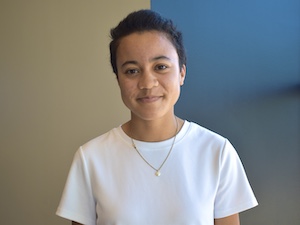 Marisa Thomas | Whitelock Community Farm
Marisa Thomas | Whitelock Community Farm
This week I’ve been adjusting to doing more tasks independently. I’m still learning more about operations on the farm and the correct procedures to follow, but I’ve gained more confidence in doing things by myself. For example, last week, I learned how wash the packing station sinks and tables before we harvest, and this week I was able to wash down the station on my own. I also feel more comfortable about identifying which plants are crops and which are weeds. As a side note, my biases towards weeds and the language I use was also challenged this week. A kid who was visiting the farm asked us if weeds were good or bad, and my instinctual response was to call weeds bad, but Ms. Kim kindly replied that all weeds are good, we just don’t want some of them to take the resources from our crops. It reminds me that we have a lot of biases ingrained in us in many different ways, and quick associations often have a binary aspect to them. A lot of things are more gray or positive-leaning than I have considered in the past, and I hope I’m developing more of an asset-based outlook on life in general.
One challenge with this week was the heat. On a couple days the sun was incredibly strong and the heat was heavy, and Ms. Kim emphasized the importance of taking breaks and looking after our health. I know in a school environment, I occasionally get so caught up with my workflow that I sometimes sacrifice sleep, so I appreciate how this work (and the program in general) really emphasizes self-care. A different challenge related to the weather came with the rain on Thursday. It was the first day I’ve worked from home, and it was a little challenging going from outdoor work to being inside. I realized that I really enjoy getting my hands dirty and being outside. I also realized that there is so much important information and protocols needed to operate a farm. I read more about the harvesting rules for the Farm Alliance, helped edit some spreadsheets that record inventory and sales, and learned more about soil. Getting more information on the operations was slightly overwhelming, but it also helped soothe some of the fears I was facing about asking questions. Now that I have a better idea of what types of questions to ask and why we do the tasks we do, I’m gaining more courage to ask questions about the struggles. I know an asset-based approach is important, but especially after the recent Dobbs v. Jackson ruling, I feel myself more worried about sustaining the work that is being done now. I want to know more about what challenges are being faced now in urban agriculture and Black food sovereignty and how successes and challenges in those spheres connect to a person’s rights and self-agency in general. It’s definitely a little challenging trying to balance the positive outlook, urgency, and joy, but I’ve already learned so much in the past two weeks, and I’m excited to see what will come next.

